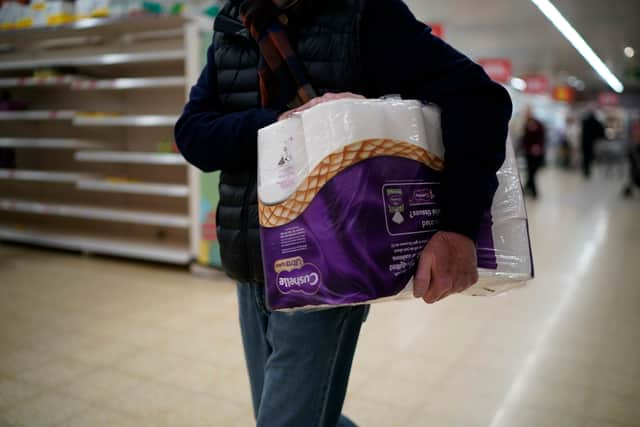Three toilet paper firms cut recycled materials in tissue ‘fuelling deforestation’, research finds
and live on Freeview channel 276
Three of the top toilet paper companies are using materials that are fuelling deforestation and more landfills, according to new research.
A study last year by US environmental organisation the Natural Resource Defense Council (NRDC) has shown the harmful impacts of tissue paper production on the vast woodland which stretches across Alaska, Canada, northern Europe, and Russia.
Advertisement
Hide AdAdvertisement
Hide AdIt found that virgin pulp, the main ingredient for tissue, was a “major driver” of the felling of trees, with researchers criticising major tissue manufacturers such as Kimberly-Clark (owner of the Andrex brand) for relying almost exclusively on virgin fibre for products.
New research this year by Ethical Consumer magazine shows that the three main toilet brands Kimberly-Clark, Essity, and Sofidel are all using virgin wood pulp and have cut the amount of recycled paper in their tissues.
According to the Environmental Paper Network’s paper calculator, tissue made from recycled content has one-third the greenhouse gas emissions of tissue fibre made from virgin wood.
On its website, Ethical Consumer said: “Given the benefits of recycled paper, you’d think companies would be using as much of it as possible. But sadly, that’s not the case and the use of recycled paper by the three big companies is decreasing.”
Advertisement
Hide AdAdvertisement
Hide AdIt found that in 2011 Kimberly-Clark used 29.7% recycled fibre but in 2021 it used only 19.3%.


Essity (which makes Velvet and Cushelle) used 40% recycled fibre in 2018 but by 2022 this dropped to 36%, while in 2019 Sofidel (maker of Regina and Nicky) used 8.9% recycled material but in 2021 it used only 7.3%.
Shanta Bhavnani, a researcher at Ethical Consumer and the author of the report, told the Guardian it is “really disappointing” to see big toilet paper companies cutting use of recycled fibres, but said there’s been “encouraging growth” in the number of alternative toilet paper products, given customers more choice of sustainable options.
The research also highlighted that all three companies take virgin wood from certified schemes like the Forestry Stewardship Council (FSC).
Advertisement
Hide AdAdvertisement
Hide AdThe FSC logo aims to confirm that forests are managed in ways that preserve biodiversity and benefit the lives of local people while remaining economically viable, but it has been involved in several scandals including certified wood coming from illegal or harmful sources.
Ethical Consumer said most supermarket and big-brand toilet papers carry the FSC Mix label which is the “least rigorous certification” as the label means that products are made using a mixture of materials from FSC-certified forests, recycled materials, and/or FSC controlled wood. Controlled wood is not from certified forests and its production hasn’t been audited.
Gareth Lucy, Essity UK’s communications director, said he was disappointed by the report as the firm had “identified and developed ways to process new sources of recycled paper, such as from used paper towels and takeaway coffee cups, and has invested in a new state-of-the-art recycled paper facility that can process a lower grade of recycle fibre.”
A Kimberly-Clark spokesperson said it was aiming to end the use of natural forest fibre by 2030 and that its UK operation uses 77% fast-growing, farmed eucalyptus fibres.
NationalWorld has contacted Sofidel for comment.
Comment Guidelines
National World encourages reader discussion on our stories. User feedback, insights and back-and-forth exchanges add a rich layer of context to reporting. Please review our Community Guidelines before commenting.
